10 Things You Need to Survive a Hurricane

Hurricane Preparedness Articles
- 7 Step Hurricane Preparedness Plan
- Hurricane Hazards and Risk Factors
- Make a Hurricane Evacuation Plan
- Hurricane Preparedness Kits and Supplies
- Hurricane Insurance Checkup and Updates
- Prepare Your Home for Hurricanes
- Help Neighbors with Hurricane Preparedness
- Complete Your Hurricane Preparedness Plan
- Emergency Preparedness Tips
- How to Prepare for a Power Outage
- 10 Tips to Survive a Hurricane Disaster
- FEMA Recommends a Generator
- Hurricane Disaster Preparedness
Anyone living along the East Coast or Gulf Coast should make advance plans for the hurricane that will someday make landfall. A plan outlines what to do and eliminates the panicked rush to figure everything out at the last moment. While almost everyone else looks for plywood to board up windows and empties the shelves at local grocery stores, your pre-fitted plywood shutters come out of the garage and install quickly. Stocked food and water for a week get the family through most emergencies.
The same disaster plan includes evacuation. The zone where you live, the routes used to evacuate, and where you will go if you evacuate along with a kit made up to take with you should officials give the order to evacuate.
Pets need a plan too and rely on their owners as much or more than children. Food, water, and waste disposal are important, but so is evacuation. Plan on staying where you can take your pets. Many shelters do not accept pets due to space and health concerns.
Hurricane Preparedness: Know Your Risks – Make Your Plans
Obey Evacuation Orders
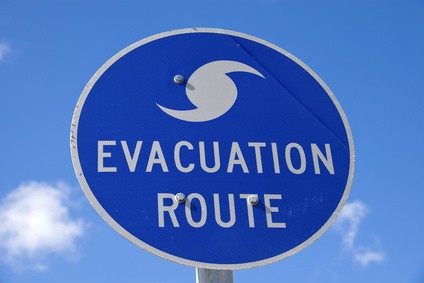 Every coastal area has one. The local legend who disregarded evacuation orders and later emerged relatively unscathed from the rubble left behind by a Category 5 Storm.
Every coastal area has one. The local legend who disregarded evacuation orders and later emerged relatively unscathed from the rubble left behind by a Category 5 Storm.
What makes all the risks of staying behind more important than safety?
Once a storm arrives, it becomes difficult or impossible to leave. Extreme winds and flying debris make travel difficult and dangerous. Those who stay behind put the lives of first responders at risk when they call for help during an emergency.
Low lying coastal regions and areas along rivers receive most evacuation orders. Storm surge takes 50 percent of all lives lost in a hurricane. A combination of low pressure and high winds pile water up into a mound that travels with the storm. As the hurricane moves toward shore, the mound of water moves inland. Storm surge during Hurricane Katrina reached 28 feet in some places. Storm surge took more than half of the 500 lives lost during Katrina.
Know your Evacuation Zone. Be ready. When the order comes, evacuate ASAP.
Don’t leave your pets behind. Many shelters can’t accept pets which means making other arrangements.
Hurricane Disaster Planning and Preparation
Essential Information

Ready.gov and FEMA.gov are the top-level federal agencies responsible for emergency management, and the National Hurricane Center for hurricanes. State level agencies make up the second level, followed by local news and weather outlets.
FEMA lists State Emergency Management Agencies. Follow on the link, then click the first letter of the state, and find the agencies listed for that state. The information includes a link for each state agency. Also included are phone numbers and other information.
Ready.gov (Department of Homeland Security) also lists state emergency management agencies. Go to the ready.gov website, click the search icon, and enter your state.
Bookmark the FEMA and Ready.gov pages, the NHC, and the state agency page(s) for your state on your mobile phone, tablet, and laptop or computer. Also, include links to local news and weather. Organize all the links in one folder for quick access to information when you need it most.
Complete Your Hurricane Disaster Plan
Decision Making
 Every decision you make will have an impact on you and your family and some of the most important decisions include your advance preparation, putting your hurricane plan into action, and making sure that your home can withstand a hurricane before you decide to stay instead of leave.
Every decision you make will have an impact on you and your family and some of the most important decisions include your advance preparation, putting your hurricane plan into action, and making sure that your home can withstand a hurricane before you decide to stay instead of leave.
No one wants to leave their home, but if it won’t remain standing during a hurricane, the risk of injury or death rises. Even one door or window not properly protected can result in the complete loss of the roof structure.
Even without evacuation orders for your zone, staying may not be the best decision if your home is not ready or the area floods frequently. Once you decide to stay, leaving may become impossible once the storm hits and it could be days before help arrives. Carefully assess each situation and make decisions based on good information. Losing your life or that of a family member isn’t worth staying home if conditions or circumstances dictate that you should leave.
Things to Remember When A Hurricane Disaster Threatens
Home Preparation
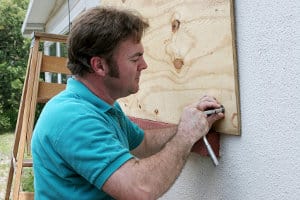 Staying or leaving, your home requires preparation in either scenario. Cover all doors and windows with plywood anchored to the house frame with screws or lag screws. Ideally, cut plywood to size and drill pilot holes for screws. Label each piece and store with the screws started in the pilot holes to make installation fast and easy. Do not forget garage doors or patio doors unless rated for hurricanes. Reinforce doors and patio doors from the inside with 2 x 4 lumber across the door.
Staying or leaving, your home requires preparation in either scenario. Cover all doors and windows with plywood anchored to the house frame with screws or lag screws. Ideally, cut plywood to size and drill pilot holes for screws. Label each piece and store with the screws started in the pilot holes to make installation fast and easy. Do not forget garage doors or patio doors unless rated for hurricanes. Reinforce doors and patio doors from the inside with 2 x 4 lumber across the door.
Move all your emergency supplies including food, bedding, and water to your interior safe room. Bring pets inside.
Home standby generator owners should perform maintenance before the storm arrives. Those relying on portables should check fuel supplies and add extra fuel storage. Top off all vehicle tanks.
Bring anything loose indoors: Grills, tables, lawn furniture, garbage cans, toys, and anything else that could easily blow away or become a flying projectile. Remove dead or broken tree branches. Trim limbs that hang over the house.
Buyer Guide: What Size Generator Do I Need?
Stay Up to Date
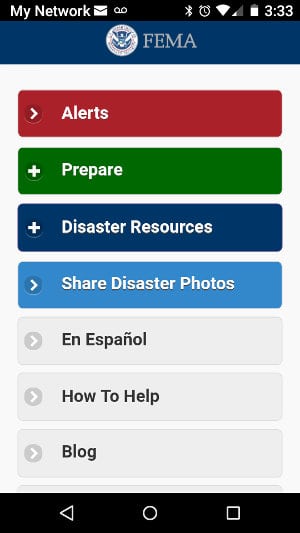
Keep cell phones charged and maintain at least two extra batteries. Once the power goes out, shut phones off while not in use and save power whenever possible. Use a radio tuned to a local station to stay up to date on the storm. An NOAA weather radio keeps you informed of emergency alerts and dangerous weather conditions.
Smartphones have access to emergency alerts. Check your settings and turn them on. Download the FEMA Mobile App for alerts in up to five locations.
Text PREPARE to 4FEMA (43362) to receive preparedness tips from the Federal Emergency Management Agency.
Follow the storm and local government organizations on social media for fast updates.
How to Use a Portable Generator During A Power Outage
Communicate
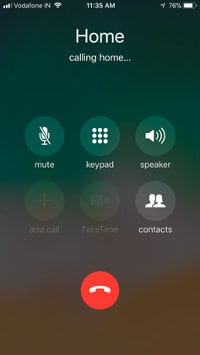 What could frustrate anyone more than not knowing the status of family or friends? Plan to have a single contact person, preferably someone away from the storm. Contact them and let them know your status so they can call or message other family and friends and let them know you are okay. Give your point of contact everyone’s phone number, email address, and social media account information ahead of the storm.
What could frustrate anyone more than not knowing the status of family or friends? Plan to have a single contact person, preferably someone away from the storm. Contact them and let them know your status so they can call or message other family and friends and let them know you are okay. Give your point of contact everyone’s phone number, email address, and social media account information ahead of the storm.
While you’re at it, make a hard copy of all the contacts on your cell phone. Keep your cell phone and contact list in waterproof zipper bags.
In the aftermath of a disaster when phone lines are down and call traffic overwhelms cell towers, Cellular Text Messages may go through when voice calls and email won’t. If you can, update your status on social media to let family and friends know you are safe.
Stay Inside
 The extreme winds of a hurricane can carry objects at deadly speeds and turn them into missiles. Documented injuries and fatalities include decapitations, amputations, maiming, crushing, and various other traumas.
The extreme winds of a hurricane can carry objects at deadly speeds and turn them into missiles. Documented injuries and fatalities include decapitations, amputations, maiming, crushing, and various other traumas.
Stay inside in an interior room away from the windows. Watch the cable weather guys risk life and limb while you stay safe inside. Keep in mind that when the eye passes over, winds subside dramatically. This short period ends almost without warning when the wind resumes at its former speed.
Portable Generator Safety Rules After a Hurricane
Emergency Power
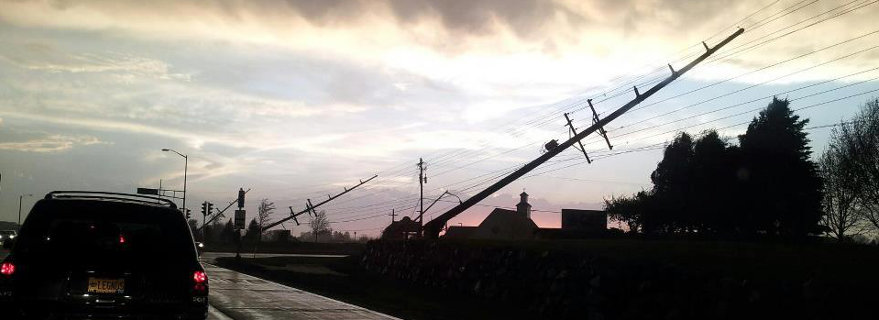
After the power goes out, food in refrigerators begins to spoil in as little as four hours. Freezers will last 12-24 hours if they remain closed. An emergency source of power becomes an essential survival tool during the extended outages that can last days or even weeks after a hurricane disaster.
FEMA recommends a generator for emergency power.
Small portable generators can keep a few essentials running, but they need refueling and can’t run in bad weather without protection from the elements. Standby generators run automatically in any weather. Using natural gas, they don’t need refueling. Ever. In addition, they can supply furnaces and air conditioners with power which keeps your home comfortable.
Although they won’t keep your entire house supplied, a lead-acid car battery can charge cell phones and tablets or run a few LED lights. Connect a USB car charger to the battery terminals to can run virtually anything that uses power from a USB port.
Don’t Go in the Water
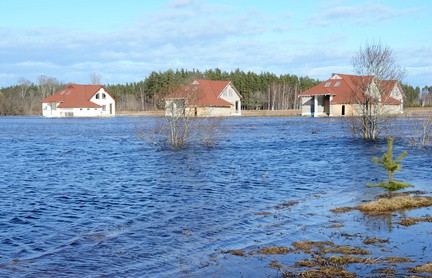 Flood waters present numerous hazards. In addition to drowning, they contain sewage, human and animal waste, chemicals, and parasites. Biological hazards turn into deadly diseases or health issues with long-term consequences.
Flood waters present numerous hazards. In addition to drowning, they contain sewage, human and animal waste, chemicals, and parasites. Biological hazards turn into deadly diseases or health issues with long-term consequences.
Moving water is dangerous. It only takes 12 inches of moving water to drag a car a road and into deeper water. Fast water erodes bridge footings and causes collapse while your car travels over it.
Water can also hide other hazards including life wires, eroded pavement, and sinkholes.
Don’t leave a vehicle and enter moving water. Don’t drive or walk into moving water. The National Weather Service advises – Turn Around. Don’t Drown.
Good Advice and a Good Decision to Make.
The Best Natural Gas and Propane Generators for Hurricane Preparedness
After the Storm
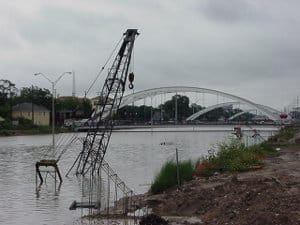 Remain cautious until authorities give the all clear, which may take days.
Remain cautious until authorities give the all clear, which may take days.
If you stayed home, don’t hurry to leave unless you require medical help or face imminent danger. In most cases, first responders arrive in one to three days, although occasionally it takes longer.
Inland freshwater flooding is the second most dangerous hazard next to storm surge. Heavy rain can continue long after the high winds subside and cause flash flooding and river flooding. Don’t enter moving water. Just 12 inches can sweep away your car, and six inches could knock you over and carry you downstream.
Your power might be out, but a downed line might be live and can carry upwards of 50,000 volts.
Be aware of scams designed to take advantage of the situation. Price gouging on bottled water and food, building materials, and fuel are common. Unlicensed contractors make big promises, but often fail to deliver.
Guard your emergency cash and don’t let others see it. Spend money with one-dollar bills. Anyone selling probably hopes for a big payoff. Don’t be caught unaware. Remember that if they could get to you, emergency responders can too.
How a Home Backup Generator Works After a Hurricane to Keep Homes and Families Safe
